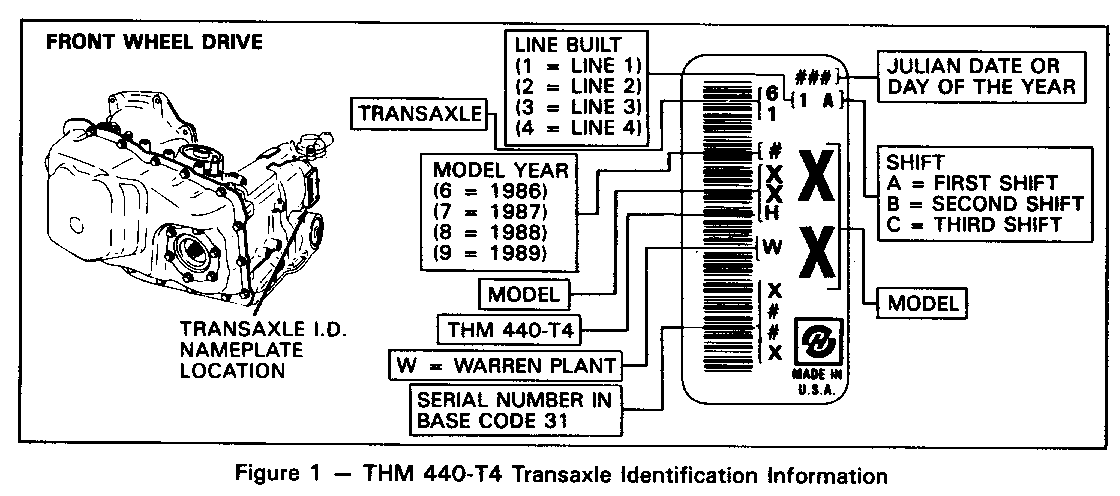HARSH 3-2 DETENT DOWNSHIFT AT HIGH ALTITUDES- W/440-T4

TRANSMISSION APPLICATIONS: SUBJECT: ------------------------- ------- 1988 THM 44OT-4 (ME9) HARSH 3-2 SHIFT AT HIGH ALTITUDE
TRANSMISSION MODELS: VEHICLE APPLICATIONS: ------------------- -------------------- 8BKH,BBJH,8BKH,8BTH, 8PBH,8FJH 1988 A,C,E, and H CARS with a 3.8L or 3800 engine
Bulletin Covers:
A harsh 3-2 detent downshift that occurs at high altitudes for some 1988 A, C, E and H cars equipped with a 3.8L or 3800 engine and a THM 440-T4 transaxle. This condition may be corrected by replacing the 3-2 control valve spring (341) shown in Figure 2. Areas above 370m (4000M) are designated as high altitude.
Prior to replacing the 3-2 control valve spring, other items to be inspected that affect transaxle operation and may contribute to harsh shift conditions are:
- Vacuum leaks (low vacuum supply to the vacuum modulator). Required vacuum is 44-61 kPa (13-18 in. Hg.)
- Paint in the modulator tube restricting vacuum to the modulator causing a delayed response to throttle movement.
- Sticking modulator valve
- Sticking 1-2 servo valve
- Missing checkball (#2, #4 or #12)
SERVICE ACTION:
Remove the control valve assembly from the transaxle and disassemble the 3-2 control valve train. Install the 3-2 control valve spring (341) from the appropriate service package shown in the Service Parts Information section.
SERVICE PARTS INFORMATION:
Transaxle Model 3-2 Control Valve Identification Spring Package --------------- -----------------
(Figure 1) Number Contents ---------- ------ --------- 8FCH 8646979 (1) 3-2 Control Valve Spring (2) Spacer Plate Gaskets (1) Instruction Sheet
8BKH, 8FBH 8646982 (1) 3-2 Control Valve Spring (2) Spacer Plate Gaskets (1) Instruction Sheet
8BJH, 88RH 8646993 (1) 3-2 Control Valve Spring 8BTH, 8BYH (2) Spacer Plate Gaskets 8FJH (1) Instruction Sheet
Parts are currently available from GMSPO.
SERVICE MANUAL REFERENCE:
Refer to the appropriate 1988 Service Information Manual, Section 7Al Automatic Transaxle On Car Service and THM 440-T4 (ME9) Automatic Transaxle Unit Repair Table Of Contents for control valve assembly service information.


General Motors bulletins are intended for use by professional technicians, not a "do-it-yourselfer". They are written to inform those technicians of conditions that may occur on some vehicles, or to provide information that could assist in the proper service of a vehicle. Properly trained technicians have the equipment, tools, safety instructions and know-how to do a job properly and safely. If a condition is described, do not assume that the bulletin applies to your vehicle, or that your vehicle will have that condition. See a General Motors dealer servicing your brand of General Motors vehicle for information on whether your vehicle may benefit from the information.
